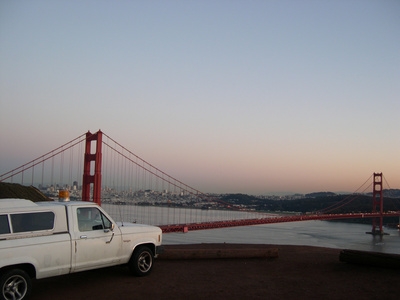
If the clutch pedal to your Ford Ranger feels spongy and bleeding the master cylinder doesn't alleviate the problem, the next logical step is to bleed the clutch slave cylinder. In some Ford Ranger models, such as the 1997 Ford Ranger, the slave clutch is located inside the transmission bell housing. If this is the case on your Ford Ranger, bleeding the slave clutch may be a job for your mechanic. Nonetheless, if the slave clutch is external to the bell housing, bleeding it is an easy task.
Pump the clutch pedal 100 times. Sometimes this is enough to remove air from the hydraulic system. If the pedal still does not feel firm, continue to Step 2.
Raise the Ford Ranger in order to be able to reach the slave clutch cylinder. If you do not have access to a hoist or hydraulic lift, raise the vehicle by placing a jack under a solid part of the truck's undercarriage. Pump the jack until you can slip the jack stand next to it. Lower the Ranger on the jack stand. Make sure the vehicle is secure before getting under it.
Locate the master clutch reservoir, using your Ranger's manual if necessary. Suck out the old brake fluid with a syringe or turkey baster. Refill the reservoir with fresh brake fluid to the max fill line. Do not allow the reservoir to fall below the half-full indication during the bleeding process. Estimate the half-full point if no markers are present.
Locate the bleeder nut on the slave clutch cylinder. The bleeder nut on the slave clutch will resemble a grease fitting with a hole in the middle, although it may have a protective dust cap on it. Make sure it can be loosened with the box-end wrench, but leave it closed for now. An application of WD-40 will help break up the rust if it will not loosen.
Slip the clear plastic tubing over the bleeder nut, ensuring that it is a snug fit. Insert the other end of the tubing in a jar or bottle with several inches of new brake fluid. The fluid will prevent additional air from being sucked back into the hydraulic system.
Instruct an assistant to press down on the clutch pedal and hold it there. Open the bleeder screw. Old brake fluid with air bubbles will flow down the tubing. Once this has ceased, close the bleeder screw. Have the assistant lift the clutch pedal.
Repeat Step 6 until only new brake fluid runs down the tubing and it contains no air bubbles. Fresh brake fluid will be lighter in color.
Lower the Ranger. Depress the clutch pedal at least 10 times. It should feel firm again. Take the Ford Ranger on a short drive to test the clutch's effectiveness.